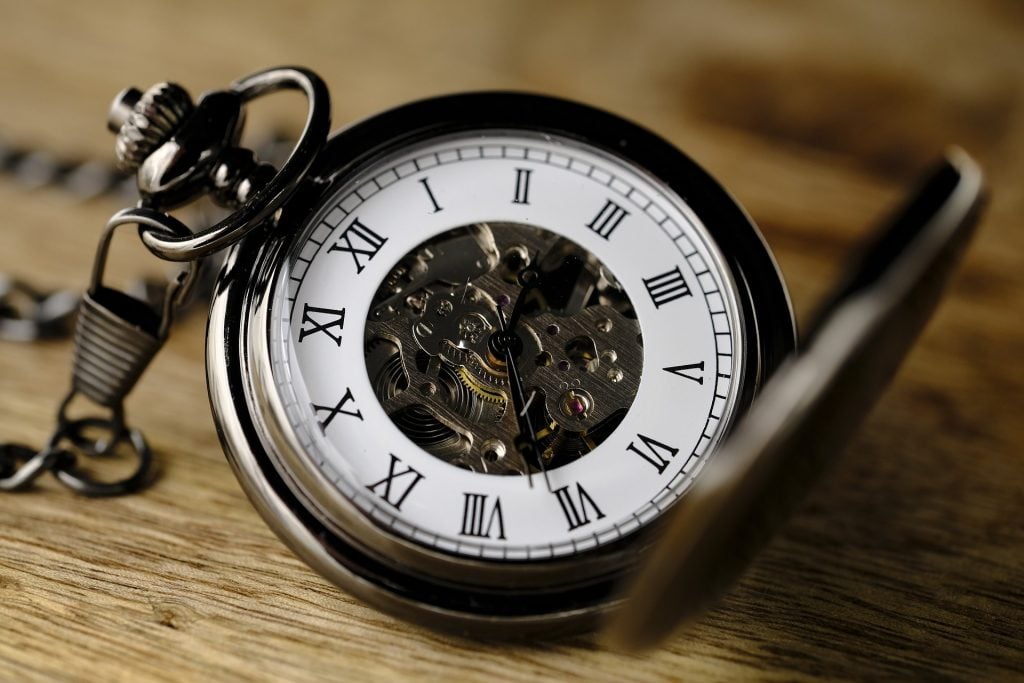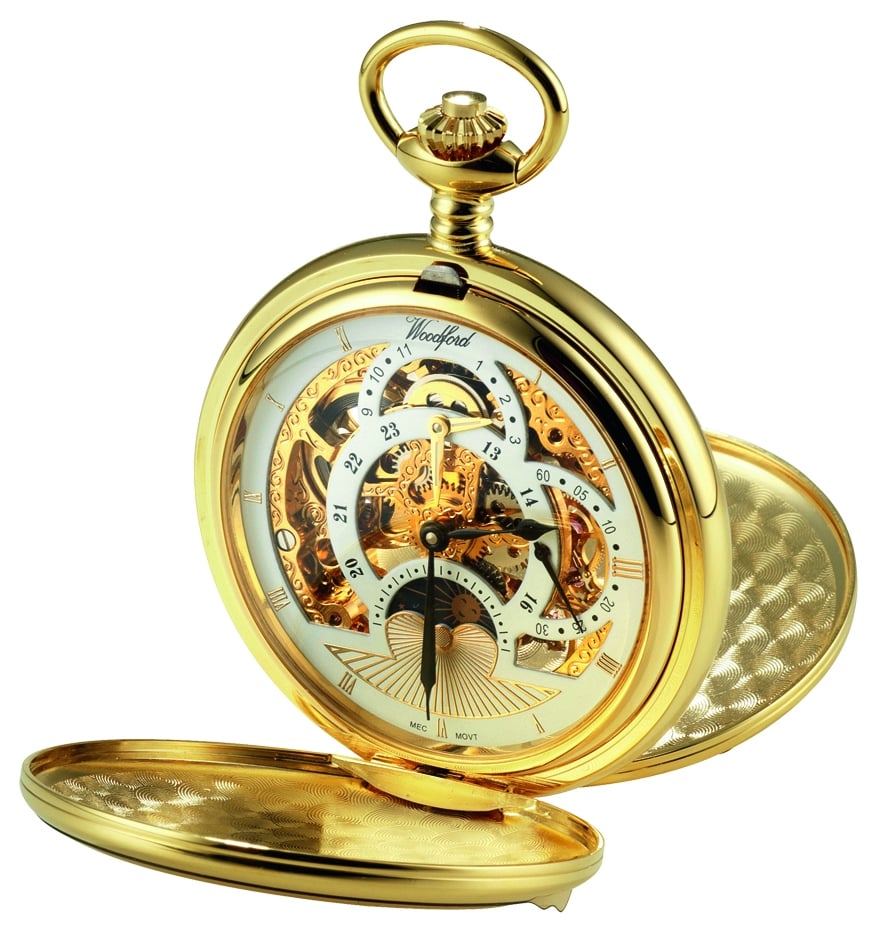Pocket watches have been an integral part of men’s fashion since the 16th century and have faded in and out of popularity ever since. These traditional timepieces are symbols of style with a great variety of models available. Pocket watches will add a touch of class to any outfit with their traditional design and elegant style. Even with the invention of wristwatches, pocket watches are still commonly made by watch manufacturers. There is still a demand for these original portable timepieces even if they are no longer the most convenient option. Pocket watches have a timeless style that will last long into the future, so if you are interested in these classic timepieces, keeping reading for a close look at pocket watches.
The History of Pocket Watches
The Beginnings of Pocket Watches

The history of pocket watches began with the invention of mainsprings between the late 1400s and early 1500s. Before this time, clocks required falling weights in order to function. Once this feature could be eliminated, clocks could be made small enough to be worn as an accessory. This invention was the work of a German inventor named Peter Henlein. The pocket watches that are popular today are still inspired by Henlein’s work.
The first pocket watches were worn as pendants that would hang from the neck. They were popular before the invention of crystals that would protect the dial, so the shape of the watches was designed to avoid damage. The cases of the watches were often egg shaped in order to protect the dial. These early models only had one hand to show the hours, as the movements were not yet complicated enough to operate a minute hand.
How Pocket Watches Became Popular

It was not until 1675 that pocket watches were commonly worn in the pocket. Charles II popularised waistcoats, and with this fashion came the trend of wearing a pocket watch in a pocket. With this change in style watchmakers found the need to flatten the design of pocket watches and ensure that each model had smooth edges to avoid the tearing and snagging of clothes.
Pocket watches remained luxury items until the late 1700s, but the craftsmanship and technology that went into the manufacturing process continued to progress. The earliest models could lose hours in one day alone, so accuracy became a key focus for watchmakers. With the invention of the lever escapement, pocket watches had the capacity for the addition of a minute hand. As technology progressed further, it was possible for standardized parts to be created. This allowed for the introduction of mass production in the late 1850s, which made pocket watches a more accessible and affordable item for the general population.
Pocket Watches Today

Prior to the twentieth century, pocket watches were the most popular form of timekeeping. However, as lifestyles changed throughout the years, a more convenient and accessible style of timepiece was required. The popularity of pocket watches declined in wartime as access to the time was required conveniently and quickly. It was this need that called for the invention of wristwatches.
Over the decades, pocket watches have faded in and out of style as the fashions have changed. The 1970s and 1980s saw a resurgence in the popularity of pocket watches as the men’s three-piece suits became very stylish. Today, pocket watches are often worn for the most formal occasions for a touch of timeless style.
Types of Pocket Watch

There are a variety of types of pocket watch, ensuring that there is a suitable model for every collector. Open Face pocket watches are one of the oldest designs due to their simplicity. They were popular amongst railroaders as they allow immediate access to the time without the need to open any covers. Another type of pocket watch is the Full Hunter model. This kind of timepiece has a hinged cover that protects and covers the dial. This makes the pocket watch more durable.
The Half Hunter is a variation of the Full Hunter. This kind of pocket watch has a hinged case with a window. This allows the wearer to read the time without the need to open the cover, meaning that the time is still easily accessible, but the dial remains protected. The Double Hunter is a typically larger style of pocket watch. They normally feature a skeleton dial and have a hinged cover on both sides. This allows the movement to be seen from all angles as the cover on the back opens to reveal a transparent case back. The Double Half Hunter is the same as the Double Hunter, but the front cover features a viewing window to allow the dial to be seen without the need to remove the cover.
Pocket Watch Recommendations
Woodford | Full Hunter | Sterling Silver | Pocket Watch | 1001

This Full Hunter model from Woodford is a classic example of a pocket watch. The traditional white dial with Roman numeral indices makes this model timeless. This watch has intricate and decorative hands that give the watch an almost antique appearance. The watch features a sub dial in the 6 o’clock position for optimal timekeeping. The case of this model is made of highly-polished stainless steel case that covers the back of the watch and form a protective hinged cover over the front. This model is powered by a 17 jewel mechanical movement.
Rotary Men’s | Mechanical | Gold Plated | Pocket MP00727/01

Rotary have designed this model to look luxurious and opulent with a gold-coloured case and visible gold coloured movement. This model features a skeleton dial which allows the wearer to observe and enjoy the hand-wound movement within. The watch has delicate hands and no indices to ensure that the view of the movement remains undisturbed. The movement is protected by mineral glass and the case measures 43mm in diameter and 11mm in height.
Woodford Skeleton Full Hunter Pocket Mechanical 1051

This Woodford model is traditional and classic in its design. It features a gold Full Hunter case which will prolong and ensure the watch’s durability. The skeleton dial features several sub dials, giving the watch a range of utility. This hand-wound model is an eye-catching timepiece that would make a wonderful addition to any outfit for a smart occasion.
Rotary Gent’s Stainless Steel Skeleton Pocket Watch MP00726/01

Silver watches are versatile and easy to pair with other accessories, and this pocket watch is no exception. The stainless steel Full Hunter case of this model protects the open heart dial within. The dial features black Roman numeral indices with slim, decorative black hour, minute and second hands. The mechanical movement is visible, allowing the wearer to enjoy the workings of the watch as a decorative element. Mineral glass protects the dial and the case measures 45mm in diameter and 18mm in depth. This model features a stainless steel chain.
J&T Windmills Men’s The Milton Pocket Watch WGP10001/50

J&T Windmills have been creating and building timepieces for generations. The brand has been in existence through many changes and progressions in the watch industry and have adapted their methods to suit the needs of the modern-day watch wearer. This model features a two-toned antique Windmills clock dial. The dial exhibits black Roman numeral indices and decorative hands. The dial is protected by sapphire glass. The case is made of sterling silver and engraved with a floral design for an elegant touch. The watch has a transparent case back that allows the Swiss made hand-wound mechanical movement to be observed by the wearer. This model is finished with a stainless steel Albert chain.
What are your thoughts on pocket watches? Would you consider adding one to your collection? Let us know in the comments below!





